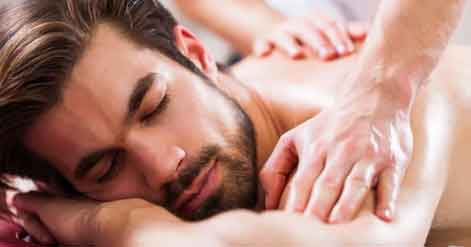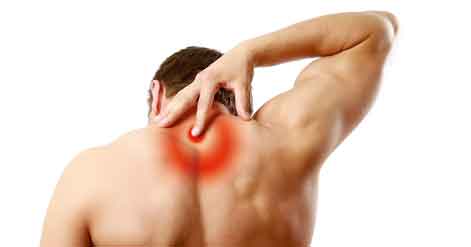Acupuncture points are found along the channels of energy which flow through the body. These have been mapped out by and the acupuncturist will locate the relevant points on the body which they will use. Each acupuncture point has an effect on the surrounding area. There are also points known as distal points which have an effect on areas far away from themselves. This means that although you may go to the acupuncturist for treatment for a sore shoulder they may use a point in your lower leg as this point has an effect on your shoulder.
The acupuncturist will choose the points relevant to your condition, the number of points used varies between conditions and also the individual acupuncturist. You may have only 5 needles in or you may have many more.
What can be Treated?
Stomach Problems, such as food allergies, constipation, chronic diarrhoea, indigestion, anorexia and gastritis.
Urinary Problems, including stress incontinence, urinary tract infections.
Gynaecological Problems, such as infertility, and premenstrual syndrome (PMS).
Breathing Problems, such as common cold, sinusitis, asthma, allergies and bronchitis.
Problems with Muscles, Joints and Nervous System, such as arthritis, carpal tunnel, migraines, insomnia, dizziness and low back, neck and shoulder pain, get more info.
Circulatory problems, such as hypertension and angina.
Emotional and Psychological Problems, including depression, stress and anxiety.
This is not an all-inclusive list but it gives an idea of the wide range of conditions that can respond to acupuncture treatment. Before starting acupuncture it is important that any other serious underlying conditions have been ruled out, usually by visiting your GP.
How Long is a Treatment Session?
This varies between practitioners but usually needles are left in for around 20-30 minutes. If a patient reacts strongly to acupuncture treatment the therapist may decide to put the needles in for a shorter time. Sometimes you may only need one session of acupuncture but usually most people have a course of around 3-6 treatments. Treatments are often carried out twice in the first week then once weekly after that. Sometimes after a treatment session the symptoms can be exacerbated, often this is only for a short time then an improvement in symptoms occurs. If this is too distressing then it can be avoided by inserting the needles for less time, using less needles or avoiding stimulation of the needles during treatment.
What Happens?
At the first session a detailed history and assessment should take place, this will vary depending on whether you are receiving your acupuncture from a traditional Chinese acupuncturist, a G.P. or a physiotherapist. You will usually be asked to lie down on the bed and remove clothing from the area to be treated. If you are being treated for back pain you may have needles put in your back, but also in your legs so its best to dress in comfortable loose clothing.
The needles are kept in sterile packets and are removed as required. There are different types of needles the ones that I have used come with a guide tube. This is a thin hollow tube which allows easy insertion of the needle. The acupuncturist will press the tube gently onto the skin over the point he has located. This allows accurate insertion of the needle onto the point. The needle is then tapped into the skin with a sharp tap of the finger. The guide tube is removed and quickly and gently the needle is pushed with a firm but gentle movement with a slight twist into the skin. The needles are very fine, thinner than those used to take blood or give injections.
Once all the needles have been inserted the acupuncturist may stimulate them during the treatment. They may do this by gently flicking the ends of them or twisting them between finger and thumb. This should not be painful but may feel a little uncomfortable if the point is sensitive. Following the treatment the needles are removed by the acupuncturist and placed in a sharps box for safe disposal. As the needles do pierce the skin there can be a very slight bleed but this is really minuscule, a tiny spot of blood and nothing like what can happen when a doctor takes blood.
Does it Hurt?
As I said before the feeling of the needle going in is really not sore. Most of the time the patient is actually unaware that the needle has been inserted. Most people are nervous on the first acupuncture treatment as you don’t know what to expect, most are pleasantly surprised that it doesn’t hurt a bit!
Are There Any Side Effects?

There are a few side effects most of which are minor and can be avoided.
FAINTING – this can be avoided by the patient lying down during the treatment session. In some cases this is not possible and treatment has to be carried out in sitting. It is more likely to occur in patient who are very nervous and tense.
PAIN – As mentioned earlier inserting the needles should not be painful. Some points however can be a little uncomfortable and if you move during treatment this can cause pain. You should therefore ensure you are lying in a comfortable stable position before treatment begins. Very anxious people can feel more pain.
INJURIES – Injuries to internal organs are very rare. There are certain points that should not be needled or only needled with great caution. A trained acupuncturist should be aware of these and therefore no injury is likely.
DROWSINESS – Some degree of drowsiness after acupuncture is fairly common. You should take care if you are going to be driving or operating machinery. It may be sensible to get someone to accompany you on your first session if you are worried about feeling drowsy after the treatment.
Does it Work?
Well its not a wonder cure that works every time. For some people it does has wonderful benefits and can completely relieve a persons symptoms. Sadly for others it seems to have no effect. It can be difficult to predict who will benefit and who will not. It can take a few treatments before an effect is noticed. However after around 4 treatments if you are feeling no effect however short-lived it is probably unlikely it will help you. Some people require a course of 6-8 treatments and this relieves their symptoms completely forever, others require “top-ups” after 4-6months to keep their symptoms from returning.

Where can I Get Acupuncture?
There are more and more acupuncturists opening clinics all round the country. I have never been to these Chinese acupuncturists so I cannot comment on the cost or their expertise. You can also get acupuncture from the NHS, some GPs are trained as are many physiotherapists. This treatment is free but obviously as with many NHS treatments there can be a waiting list. If going to a private clinic I would recommend talking to people who have been there and asking them about their opinion. When you go to the clinic ask them what qualifications they have and if they are registered with any of the acupuncture societies. You can check these on the internet. With acupuncture you need to be sure they are properly qualified and following safe practice especially where needles are involved.
My Experience
I am a trained physiotherapist and I hate needles. I nearly faint when they take blood from me! So I never imagined that I would train to do acupuncture. However working in a ward where so many people are in pain and so many on high doses of painkillers that then give them more side-effects I wanted to do more to help them. As a student I had watched acupuncture treatments and was amazed at its effects but always dismissed it as something I could never do because of the needle issue. I had been thinking of it for a while when a course was advertised in Scotland. I spoke to another physiotherapist who used acupuncture and she assured me I would be fine and offered to put a few needles in me to see how it felt.
Well I wasn’t looking forward to it but I thought I really should give it a go so she put a few needles into my arm and my hand and it was fine. It didn’t hurt, I didn’t faint and I thought yes I think I can do it. So I did the training course, got the certificate and was ready to be released on to the general public. I don’t use acupuncture on a daily basis in my work as for a lot of my patients it isn’t appropriate. Patients need to be able to give informed consent to the treatment and some of my patients have dementia so I can’t use it. However on some of my patients I have used it especially on things like arthritic knees which it seems to work well with. I have to admit that I have used it sometimes and it hasn’t made any difference so we have had to use other things to treat the pain.
I use it with family members but not with my husband who has quite a severe needle phobia and won’t even watch the needles go in someone else never mind me try to even approach him with one. It’s not for everyone but if it works then it’s a wonderful thing.
Some Points To Try

Before I leave you here is a point you can use on yourself and the wonderful thing is you don’t need to use needles. There is a point in your hand which is the major point for pain relief. If you hold your hand in front of you, for this we will demonstrate with the left hand but you can do it on both. Hold your thumb out to the side to you make an L shape with your thumb and index finger. Then pinch the web of skin between the finger and the thumb, not right at the edge where there is only skin but right in at the fleshy part between the two bones. Pressing on this for a few minutes helps relieve pain. If you have a headache then you are supposed to press on both hands at the same time, I have tried this but you really need another pair of hands! Well if you try it and it helps let me know!